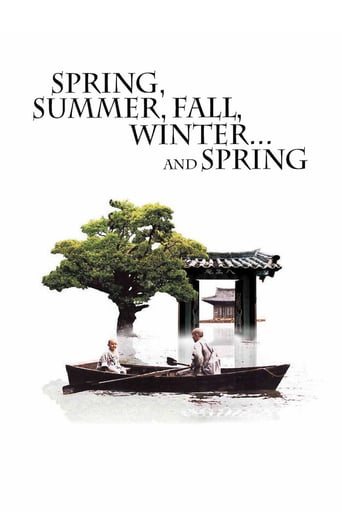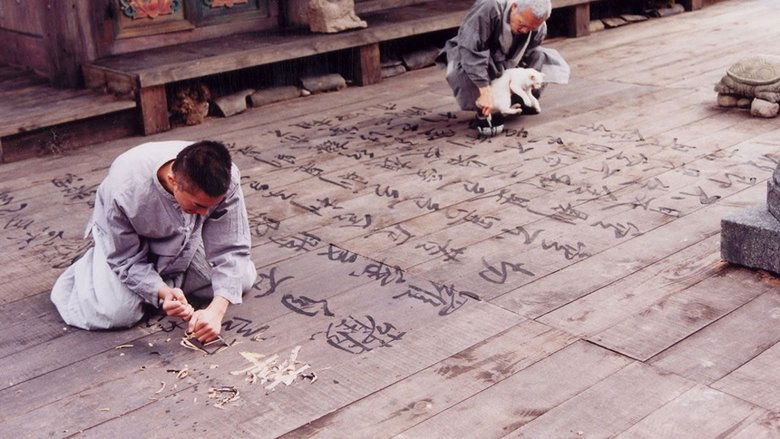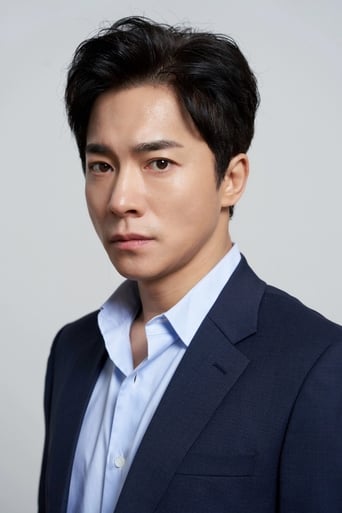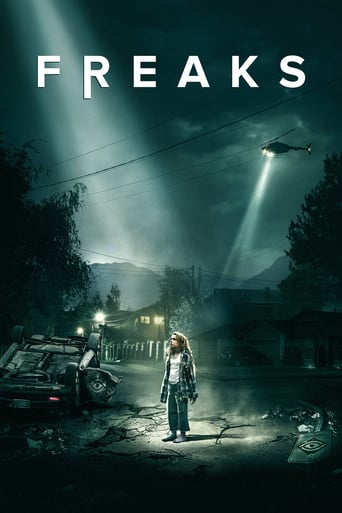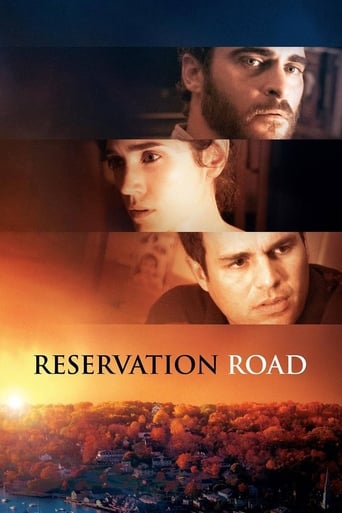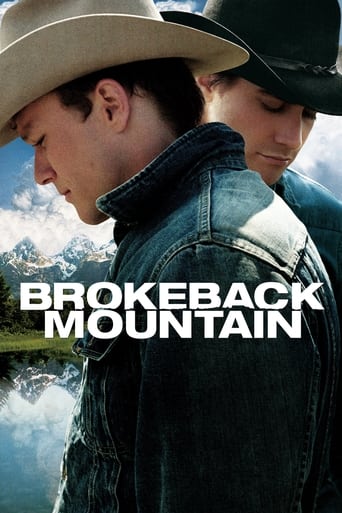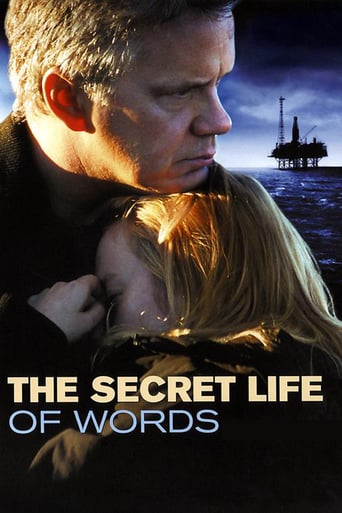Spring, Summer, Fall, Winter... and Spring (2003)

An isolated lake, where an old monk lives in a small floating temple. The monk has a young boy living with him, learning to become a monk. We watch as seasons and years pass by.
Watch Trailer
Cast


Similar titles
Reviews
This is not a boring art movie. Do not skip this movie thinking it's going to go over your head, even though some of it probably will. This movie will make you think and feel, and it's not a difficult watch like some Tarkovsky film or There Will Be Blood or something like that. It's less than two hours long, it's easy to follow and it has some really profound messages.There is plenty of symbolism that requires knowledge of Buddhism to fully grasp, like the animals present in the movie, or the meaning of the ending sequence, but even without context you can appreciate the story and the characters.Kim Ki-duk's movies are great, some of them are really weird but this one just works even if you go into it totally clueless.So why is it that good? It's got it all - love, passion, crime, forgiveness, repentance. It's got a totally ripped kung fu master, a beautiful young lady totally naked, it's got a floating Buddhist temple in the middle of an idyllic valley, it's got a spell inscribed onto the floor by a cat's tail. It will leave you with questions, but it will also give you answers to questions you didn't know you even had.
it is the first word for define it. because it is a not ordinary beauty. but a sort of trip in spiritual air. its gracious simplicity, its moral lessons, who define each religious attitude, its delicacy, the flavor of images, the ways of the young disciple and the presence of the master, the temptation and the joy, the precise manner to suggest more than present, the bitter temptation and the return are pieces of a fascinating work. and this does the film an event. or a precious seed for useful memories. because all is a form of reflection of the viewer. because each scene becomes a chance to discover yourself. like in a large mirror who discovers the hidden side of yourself. short, a film who must see. for remind old impressions about Extreme East. or for escape from the every day pressure and the temptations of media.
The title gives away the structure. It is Spring, and a floating temple is surrounding by an idyllic lake and mountains all around. A young boy giggles endlessly while abusing animals in the most unusually cruel way, and no doubt Kim Ki-duk has inflicted this in real life as it is on the screen, leading to that entire end sequence being cut in the US. Not that I agree with animals cruelty, but there is nothing to be gained and much to be lost by removing the entire ending of a film. Upon being discovered by his master, the boy has his own cruelty imposed on him, and the young actor's ability to laugh and gurgle so unmoved from his acts but also sob endlessly is marvellous. A stone is placed in his heart, and its burden remains for much of his young life. Summer opens as all the other seasons do, with the creaky beckoning of the doors of the archway which often frames the floating temple. Now it provide a docking point in the heat of summer, while at other times it is half submerged by the tide. It provides a purely symbolic function, much like the wall-less door in the temple itself, but signifies the devotion of the Buddhist lifestyle that is marred when the now teenage boy commits theft and flees. He is blossoming sexually, wrapped up by carnal desire, but is also conflicted enough to pray relentlessly and tearfully upon his defeat to temptation. The first instance of sex is framed by a extreme wide shot of the two against the rocky shore of the lake, and I am struck by how much this seems like animalistic behaviour in the wild, of filming a documentary where two creatures unexpectedly give into their biological functions. The master is not furious when he catches him, but warns that a strand of lust and desire will lead to greater wrongs. He carries two items as he flees, heartbroken; the rooster is a purely selfish act, while the statue is the weight of the teachings that cannot be separated. The last shot is of sunlight being pushed out of frame by storm clouds.Fall brings orange leaves and the boy back, now a young man and having committed murder because of his undying love. This is tragic because it shows the pitfalls of the religion and also the solitary lifestyle; he has been taught to repress such desires and has not adequately understood love, and so chases after a woman who, he has shared more sexual experiences than words with. The rock is at its most heaviest here. And yet the master is once again not furious, but wholly accepting. He beats him not for the murder he has committed, but for trying to escape its consequences through suicide. Kim di-Kuk masterfully imbues a peaceful silence as the man carves out his repentance (an admittedly cheesy moment when the master silences the gunshots with well thrown rock). Even the two policemen become swayed by this peace. As he is taken away for physical punishment, there is a achingly beautiful time lapse shot where the water and leaves tremble, and the temple slowly but surely floats across serenely. This signifies the end of the master's life, having done all he has done. There will be another master.Winter, and the lake is frozen in time. In an incident of karma, a veiled woman arrives, proceeds to abandon her son, and pays dearly with her life. The middle aged man, nearly complete in his repentance and understanding, merely accepts this as it is, just as his master did so long ago. We do not see her face, but does it matter? It could be any of us. The soundtrack is at its most dramatic here. A tense orchestration strikes up as he begins a training montage, moulding and sculpting his body according to the meditative teachings, acquiring peace of mind. He gracefully poses upon the slippery surface without the least bit of concern - he has mastered the surface, and the water that he once struggled with so much. To complete his journey, he once again inflicts the punishment of the animals. The traditional ode Jeongseon Arirang is particularly lifting as he beings the ascent to the mountain. Crosscut are a frog, fish and snake struggling and writhing, mirroring his pain. It has been merely an hour in runtime since those childhood actions, but it feels like a lifetime. Life returns us to Spring, and again we have a young boy torturing animals, and showing a lack of awareness of what is to come. But the final shot offers a different perspective, of the Buddhist statue overlooking the lake and its temple, framed and isolated by the power of nature. The cycle of life and birth and reincarnation has brought us back to this point, but the trials and tribulations of a man promises release from this never-ending cycle. The colours and words of the Heart Sutra are now faded, but its lessons remain.
A movie astonishing in its beautiful portrayal of the nature through all the four seasons. Thought-provoking in its message of the journey of the hero: from joy and pleasure to lust, desire and anger. And finally coming full circle with redemption and contemplation.The movie is indeed universal, as it shows the circle of life and the circle of the seasons. But there are many spiritual meanings to be found if you dig deeper and recognize the Buddhist signs. It's a timeless masterpiece and a must-see film for everyone above the age of 16. It's not held back by a complex plot or difficult dialogues. It's simple, yet full of wisdom.

